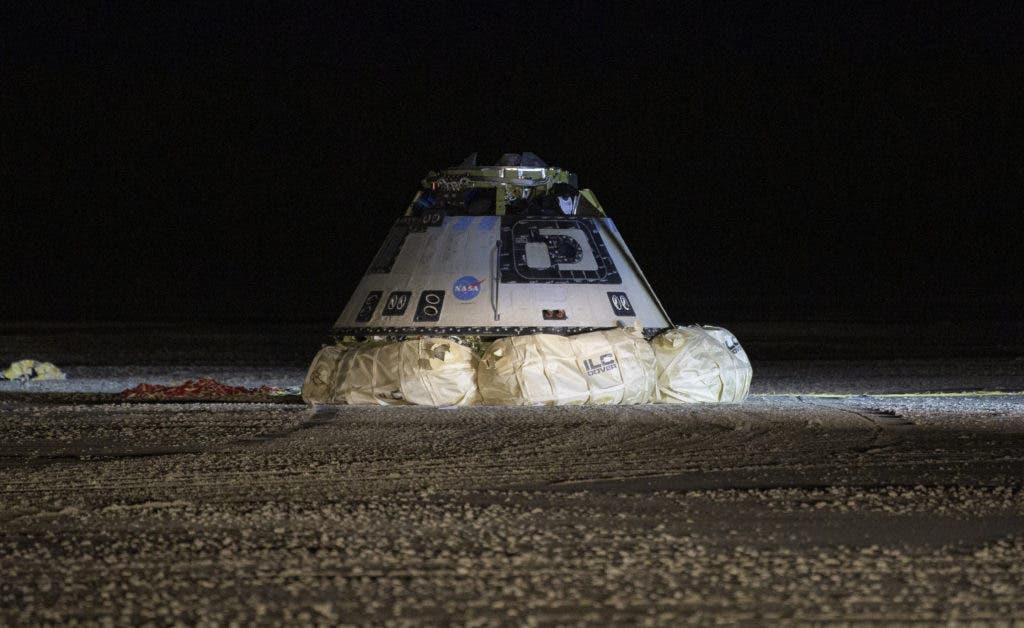Boeing’s Starliner crew capsule safely landed in the New Mexico desert on Sunday, after an internal clock error thwarted its mission of delivering presents and supplies to the International Space Station (ISS).

Although the mission itself was a bust, Boeing employees were relieved to get the Starliner back. Furthermore, the landing itself — the Starliner is the first American crew lander to land on the ground, not in the ocean — was a resounding success. The mission managers at NASA are currently reviewing data from the mission to decide whether they’ll run another test flight or go straight to manned missions, the agency reported.
A matter of time
“We pinpoint landed it,” NASA Administrator Jim Bridenstine said at a post-landing briefing.
“A beautiful soft landing,” added NASA astronaut Mike Fincke. “Can’t wait to try it out.”
The Starliner touched down at the Army’s White Sands Missile Range in New Mexico in the predawn darkness on Sunday. It was scheduled for a week-long mission but only flew for two days. It was launched Friday from Cape Canaveral and all seemed to be going smoothly until, half an hour into its journey, the Starliner failed to fire its thrusters as scheduled. This burn was meant to put it on the same orbit as the ISS.
However, the capsule’s internal clock wasn’t set properly and showed an 11 hour difference with those on the Atlas V rocket that carried it, explained Jim Chilton, senior vice president of the Space and Launch division of Boeing. In the end, the Starliner set on a wrong orbit. Ground control had eventually managed to reset the clock — a process made difficult by frequent signal gaps due to the capsule’s position — but by this time the Starliner had used up so much fuel in an effort to reorient itself in orbit that it couldn’t reach the station any longer. So they decided to land the craft. The mission lasted nearly 50 hours and included 33 orbits around the Earth, about 100 orbits fewer than planned.
Boeing is still working to figure out how the timing error occurred. Right now, however, they’re relieved to have the capsule back in one piece. The landing was broadcast live on NASA TV, showing the craft fully upright and with very little wear and tear from reentry by dawn.
The astronauts assigned to the first Starliner crew, two from NASA and one from Boeing, were part of the welcoming committee. Rosie the Rocketer, a test dummy that flew in the capsule, survived the landing in perfect condition — as did the food, clothes, and presents inside. The returned capsule also received its name following the landing: Calypso, after Jacques Cousteau’s boat.
“We didn’t do everything we wanted to do, but we don’t see anything wrong with this spaceship right now,” despite the timing error, Chilton said.
He also apologized to the six space station residents on behalf of the company for not delivering their Christmas presents.
The capsule will return to Florida’s Kennedy Space Center in two weeks for inspections and refurbishments.
“We’ve got a lot of learning in front of us,” Bridenstine said. “But we have enough information and data to where we can keep moving forward in a very positive way.









